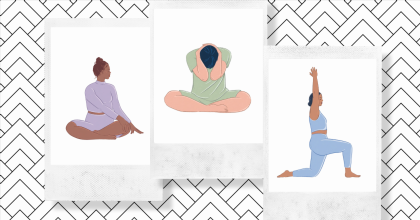Who doesn’t feel like they spend all their time online these days? If you’re looking to reduce your screen time, yoga may not automatically be the activity you turn to, but a quick flow may be just what you need.
Many of us spend nine hours a day chained to our laptops and computers. We then spend the evening glued to Instagram or TikTok while watching iPlayer on a bigger screen. Perhaps we start the day by reading the papers on our iPads or having a brief scan of Twitter. We’re addicted to screens, and it’s not doing our minds or bodies any favours.
Researchon screen time and the brain has shown that excessive reliance on tech really isn’t good for us. A study published in the European Journal of Radiology found that a lot of time spent online can result in grey matter atrophy. The areas most affected by that shrinkage? Those concerned with governing functions like empathy, compassion, organisation, impulse control, planning and prioritising.
You may also like
Headache relief: 5 eye yoga moves for laptop-tired eyes
A 2017 study also found there to be a link between excessive screen time and depression, with moderate-to-severe levels of depression being associated with spending over six hours online or watching TV a day. While most would argue that depression is caused by a host of factors, that’s an alarming claim nonetheless.
But it’s not just the mental impact of relying on screens that we should be concerned about. Yogi and author of Yoga Happy, Hannah Barrett, argues that too much time spent online can have a negative impact on our bodies, with poor posture and eye strain being among the most common issues.
“There was lots of press during the pandemic mentioning ‘tech neck’ from hunching forwards while using smartphones and tablets, stressing muscles of the neck and shoulders,” Barrett tells Stylist. “It is said to have increased in recent years which is unsurprising when we consider how many times a day we’re all currently looking down at our devices.It’s important to care for our necks and posture where we can and the yoga sequence below can help.”
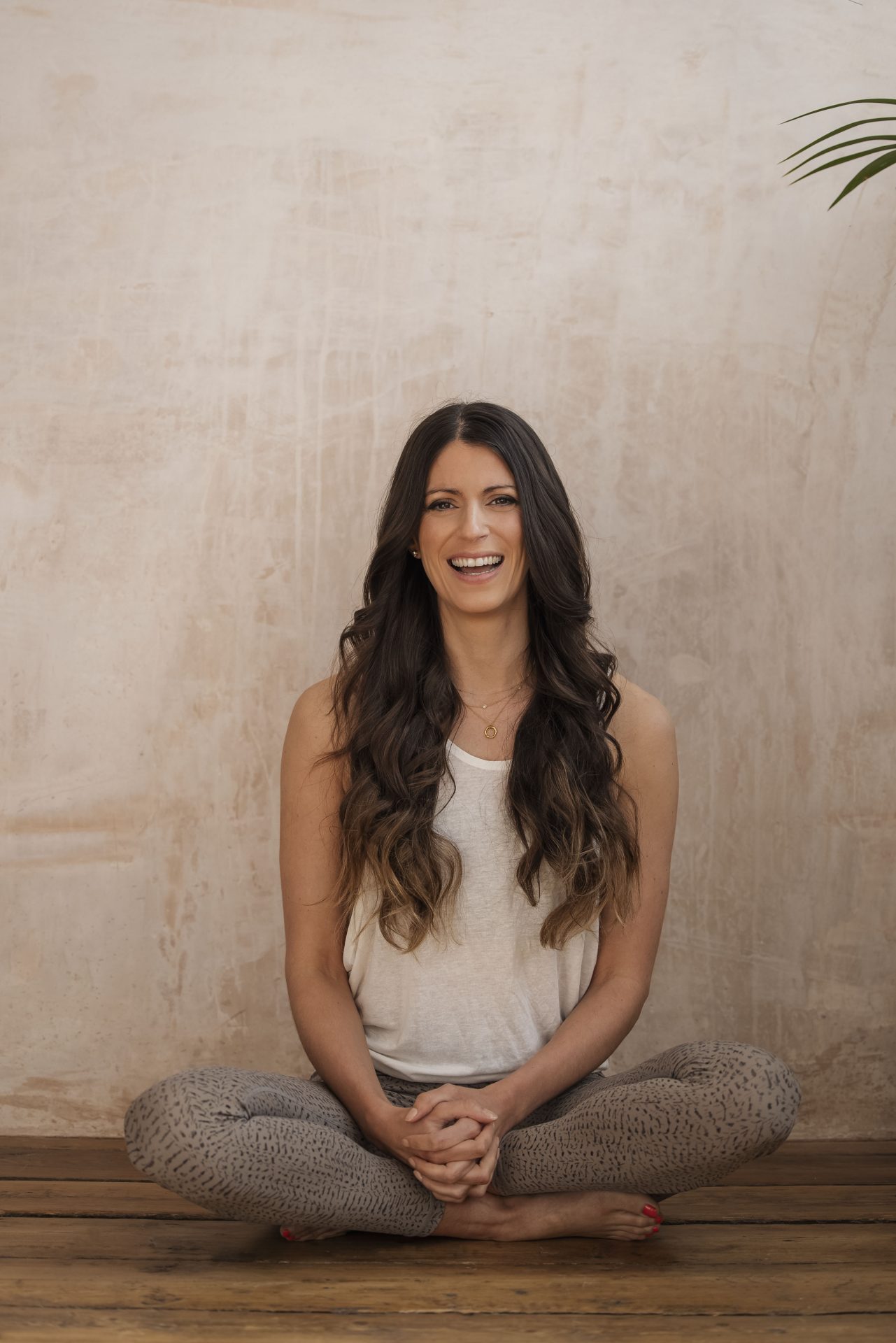
“Screen time has also been shown to impact sleep quality which can really impact our overall wellness in many ways. This can be particularly true when using screens before bed,” she continues.
She recommends trying to get into the habit of turning off screens an hour before bed, and leaving your phone outside of the bedroom if possible. Lastly, Barrett suggests: “Try the breathing technique from the flow below before you go to bed to help calm the nervous system and promote a restful night’s sleep”.
Hannah Barrett’s 7-step yoga flow for reducing the impact of screen time
1.Seated three part breath – 10 rounds
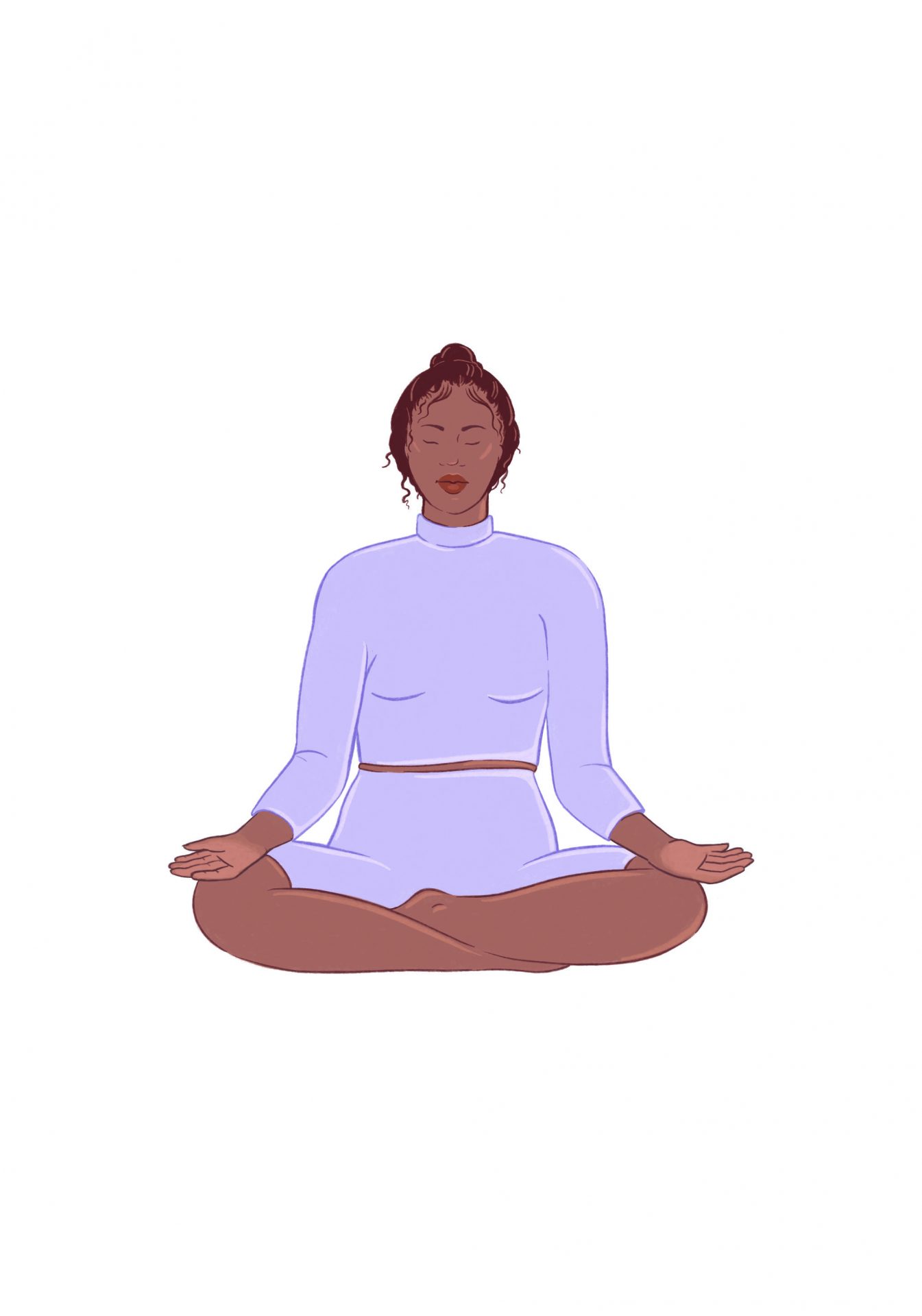
Help to bring the body back into rest and digest mood with this moment of stillness. Focus fully and completely on the breath and all its sensations. When your mind wanders (which is will), gently, with compassion, bring yourself back to the breath.
- Place one hand over the belly and one onto the heart.
- Take a deep inhale through the nose from the base of your stomach, feeling the stomach expand like you’re blowing up a balloon.
- Keep inhaling, sending the breath upwards through the chest, feeling the ribs moving outwards, sideways and backwards.
- Send the breath all the way to the collarbones, filling the lungs as full as they will go (so you’re breathing in three times in a row).
- Exhale slowly through the nose, feeling the body release all the way down to the base of the stomach.
- Aim for each inhale and exhale to be as slow as possible (four-to-eight counts or longer).
2.Seated cat cow – five rounds
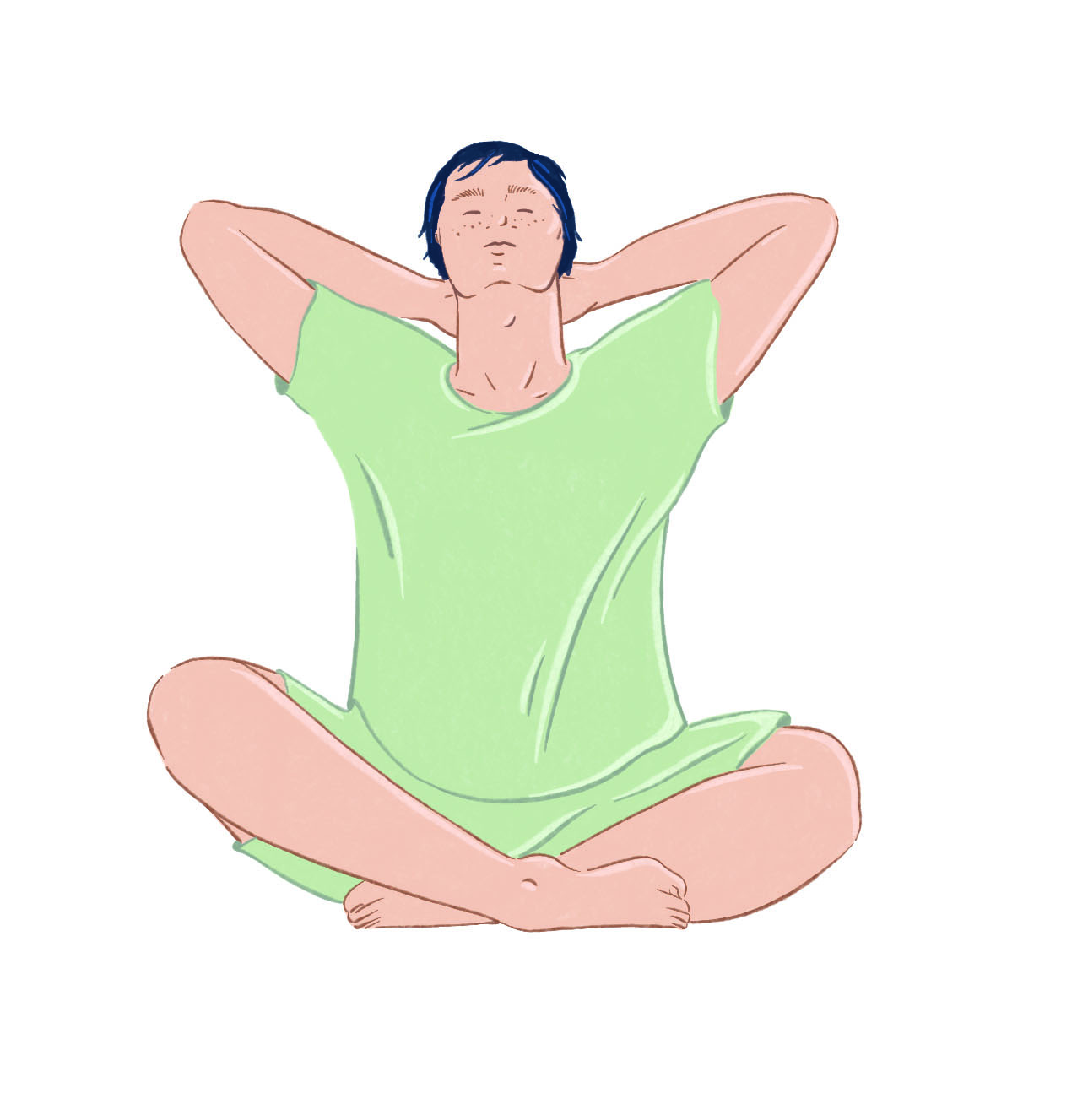
Helping to open the chest, shoulders and back creates calm and can improve posture.
- From a seated position, interlace the fingers behind the head.
- Inhale as you open the elbows and chest, breathing up and lifting through the chest, bringing a gentle bend into the upper spine.
- Exhale and start to round through the back, bringing elbow to elbow as you draw navel to spine.
- Round the back and tuck the chin.
3.Seated twist – hold for five breaths each side
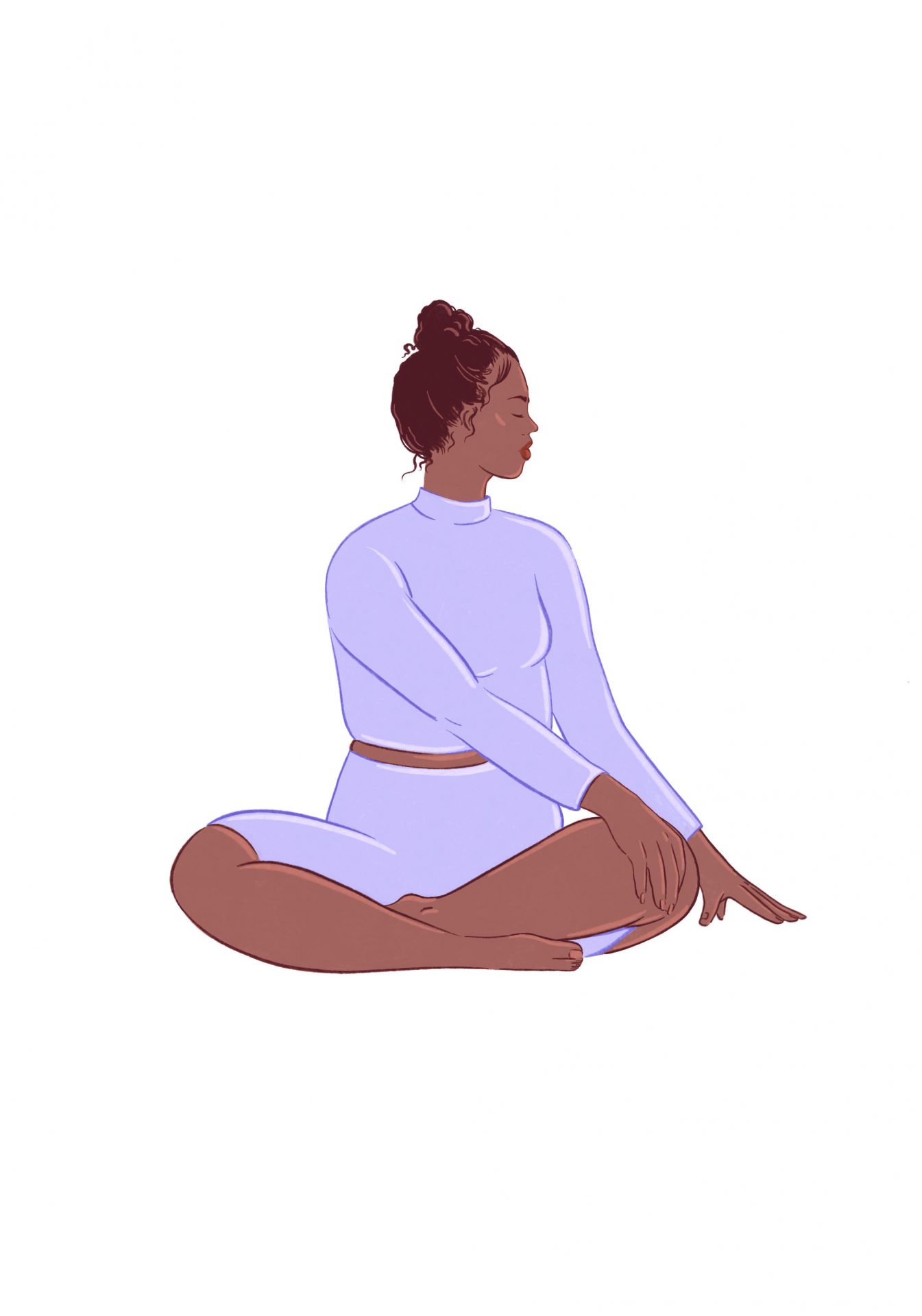
Mobilises the spine, stretches the neck, chest and shoulders and can improve posture
- From a seated position, bring the right hand to the left knee and the left fingers tips behind you.
- Inhale to find length through the spine, growing tall through the crown of the head.
- As you exhale take a gentle twist gazing over your left shoulder. Imagine the twist going all the way up the spine (like a spiral staircase) avoiding just twisting the cervical spine (the neck).
- Hold this posture for five breaths and then slowly release before repeating on the opposite side.
4.Downward facing pose – hold for five breaths
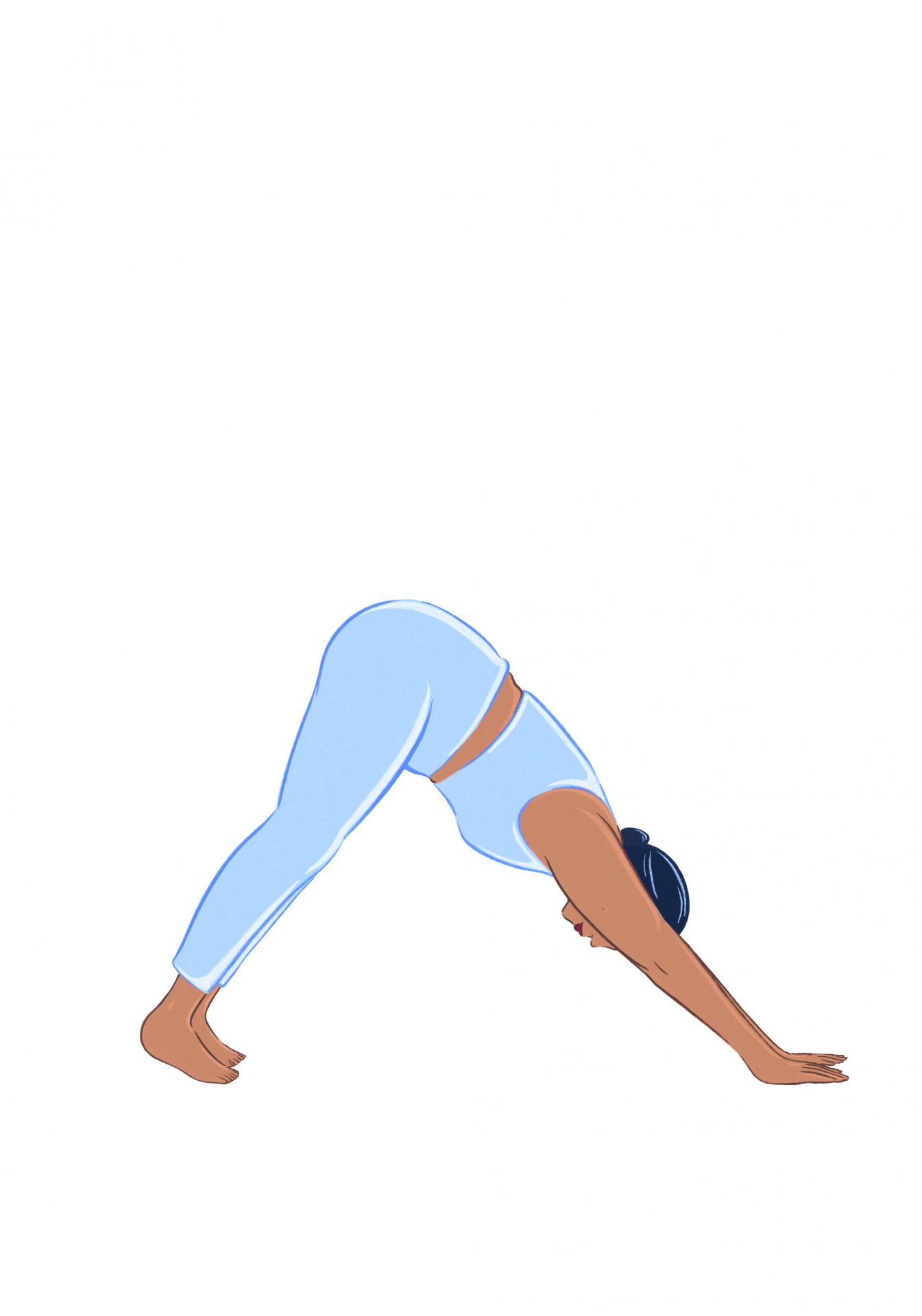
Improves shoulder and arm strength, lengthens the hamstrings, calves and lower back, energises the body and focuses the mind.
- Start on hands and knees with the hands shoulder distance and knees hip distance apart.
- Spread the fingers, middle finger facing straight ahead and press firmly into the mat through the whole hand. Have a sensation of ‘dialing’ the hands in opposite directions (like screwing jam jar lids) without the hands actually moving. This broadens and stabilises the shoulders.
- Exhale, curling the toes under and lifting the hips back and up reaching the sitting bones towards the ceiling, keeping the spine neutral.
- Keep the long spine as you start to slowly straighten the legs, avoiding any rounding in the lower back.
- Draw the heels towards the mat but don’t worry if they don’t reach.
- Keep the legs active by rotating the inner thighs inwards and firming the outer thighs.
- Draw the front ribs in towards the back body.
- Keep the neck long, between the arms and hold for five breaths, then exhale and slowly release.
- Option to modify by bending the knees as much as you need to keep the spine long.
5.Low lunge – hold for five breaths each side
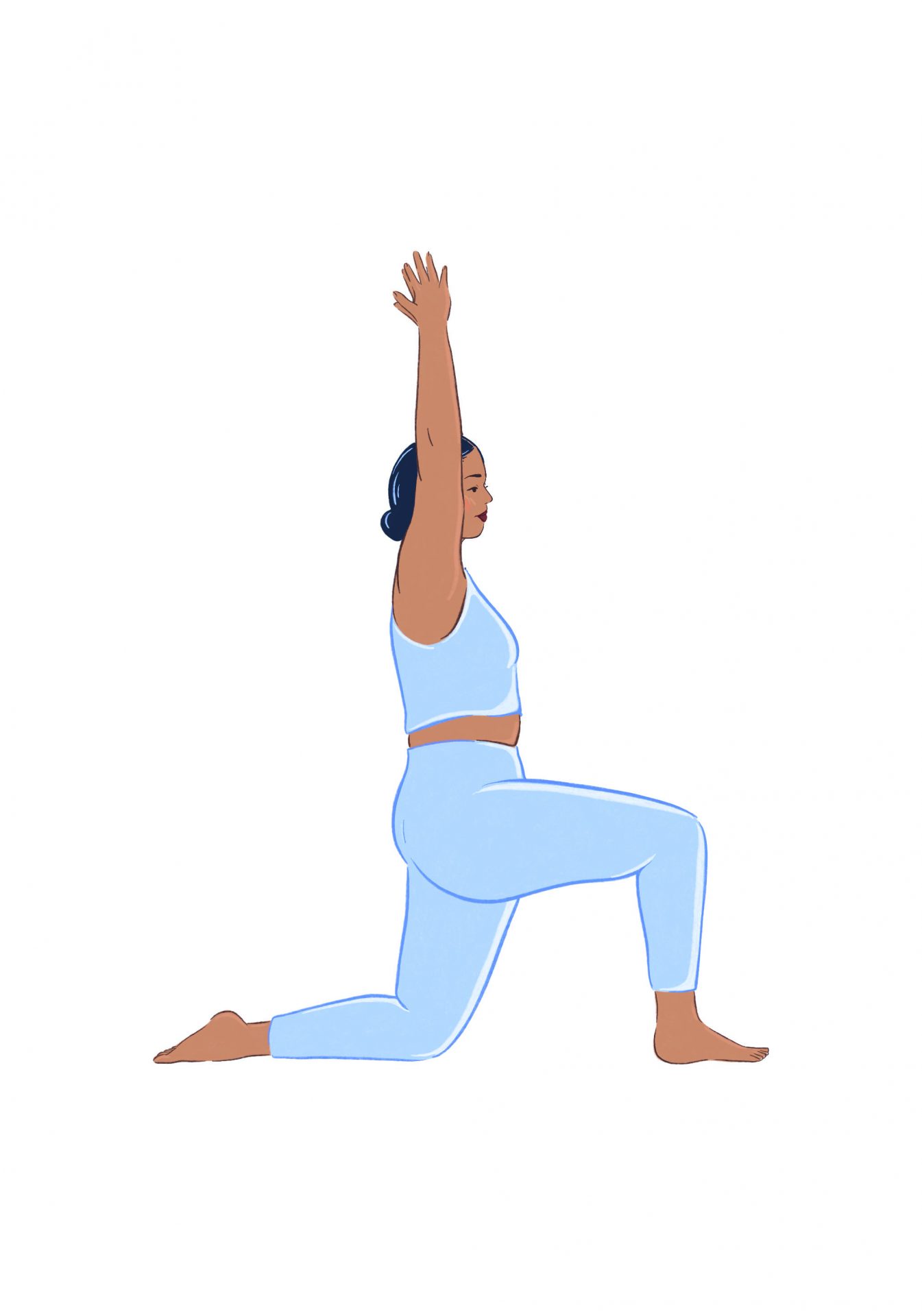
Strengthens the legs, opens the front of the hip and thigh and can help relieve lower back pain
- From downward-facing dog pose, exhale and step the right foot forward between the hands (use your hand to help you if required) coming down onto the left knee.
- Stack your right knee over your right ankle and the left hip over your left knee and engaging the glute to help open the front of the hip.
- Inhale and reach the fingers high to the sky, lengthening through the side body, drawing the ribs in to avoid them flaring.
- Hold for five breaths, then repeat on the other side.
- Option to step the right foot forward further to focus the stretch on the front of the thigh, keeping the pelvis in a neutral position. You could also turn this into a backbend, keeping the glutes strong and lifting the chest upwards gently opening through the upper spine.
- Place a blanket or cushion under the back knee if needed.
6.Warrior 3 – hold for five breaths each side
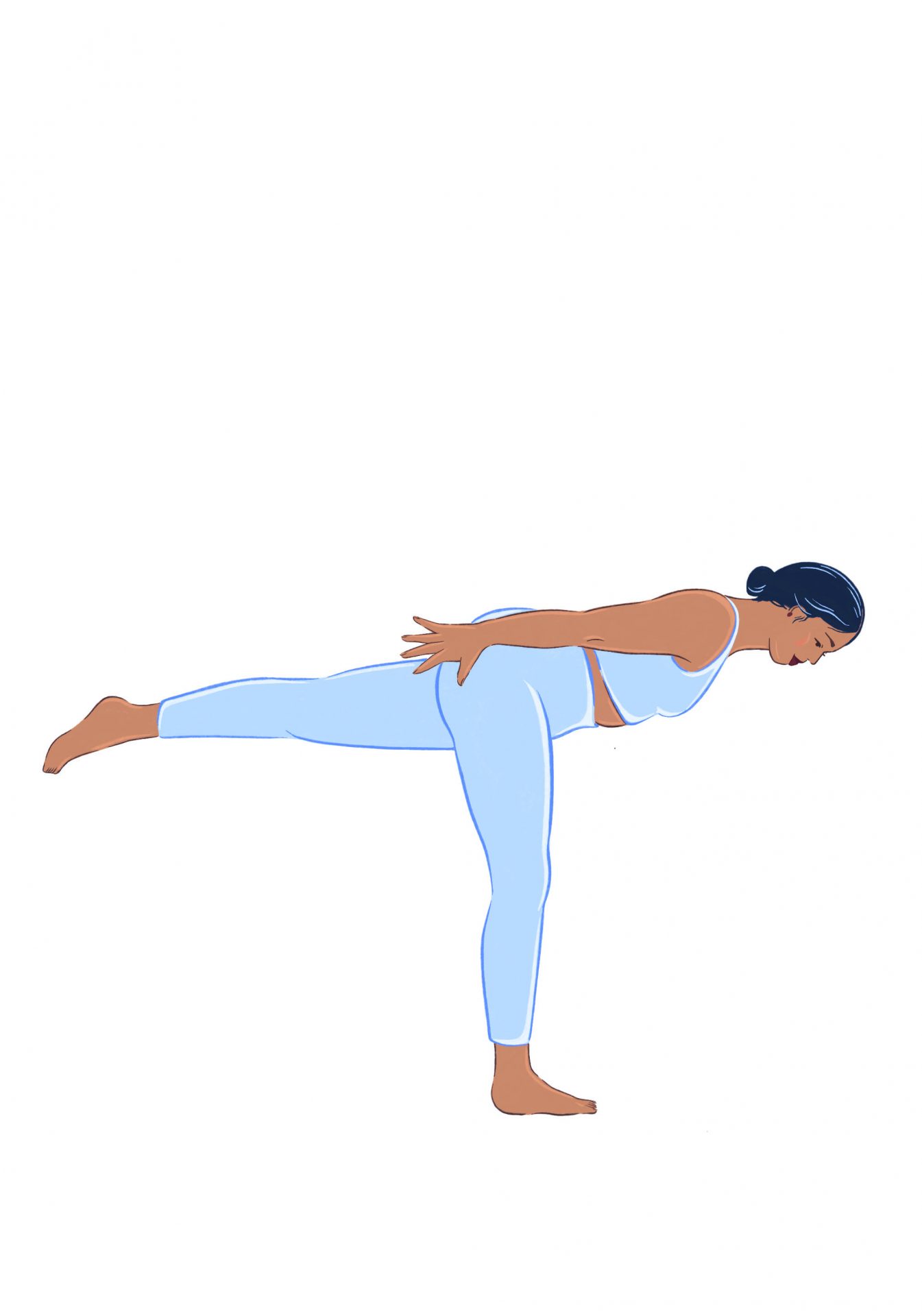
Improves balance, strengthens the hips, legs and core and can help calm the mind.
- From downward-facing dog, exhale and step the right foot between the hands (use your hand to help you if required).
- Inhale up to standing, lifting the arms straight up to the ceiling.
- The hips are facing forward, right knee stacked over ankle.
- The left knee can have a slight bend to help keep the pelvis and spine neutral. This is high lunge.
- Exhale slowly shifting the weight forwards, hinging from the hips and bringing the left leg back up behind you, pointing the toes and squeezing the glutes.
- Push firmly through the grounded foot and big toe mound to activate the stabilising muscles in the hip. The left hip will want to lift up, try to square it in line with the right (placing the hands on the hips can be helpful).
- The spine stays long, creating a long line from the crown of your head to your left toes. The hands can come to the hips, heart centre, behind or reach out in front.
- Hold for five slow breaths.
- Inhale to return to high lunge, exhale back to downward-facing dog and repeat on the opposite side.
7.Restorative fish – hold for 10 breaths or as long as you need
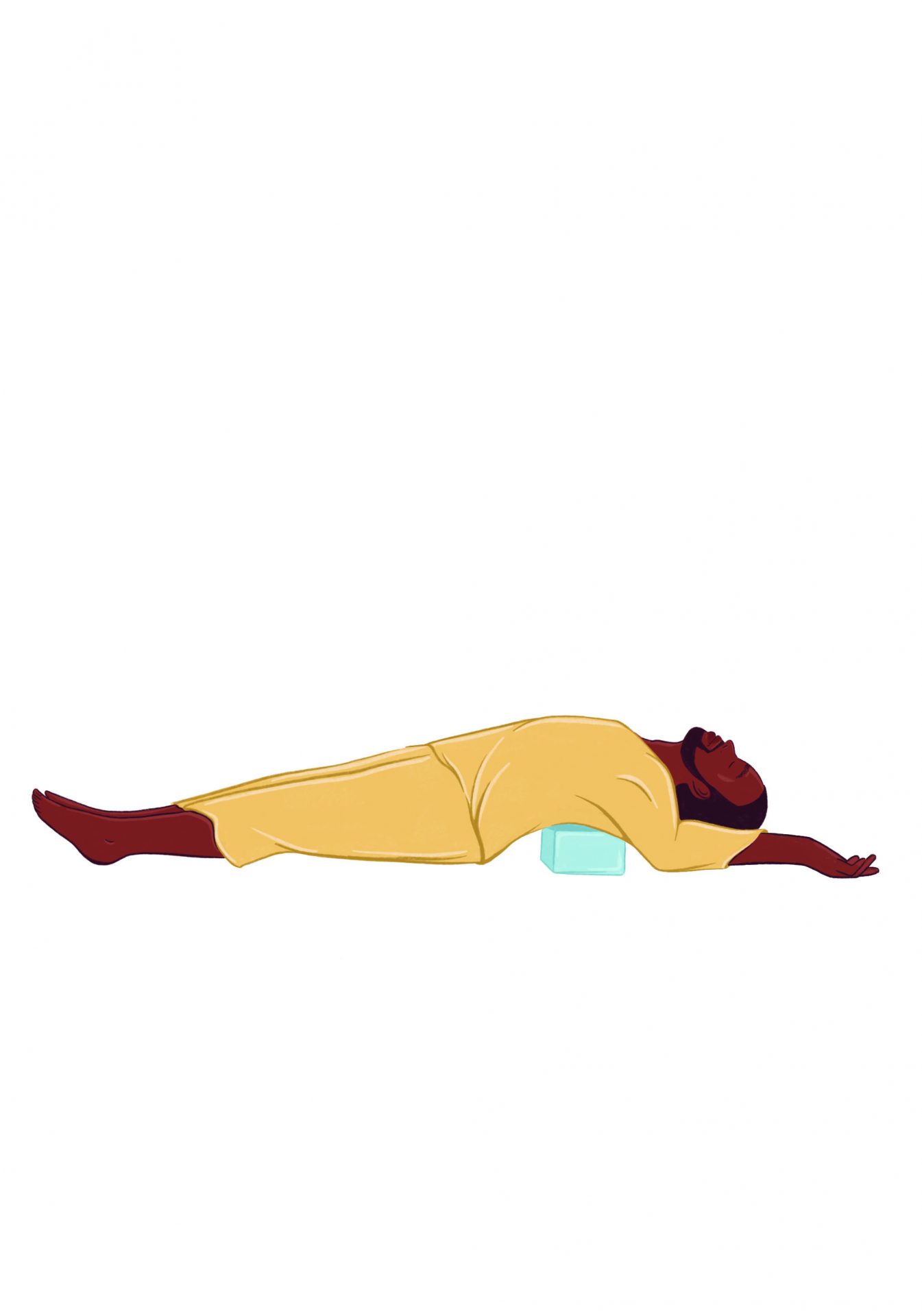
Relieves tension in the neck, throat and shoulders, opens the chest, can improve digestion and calms the nervous system.
- Place a pillow or block parallel to the short edge of your mat about a foot and a half away from the back of the mat.
- Option to place another pillow or block for your head at the back of the mat.
- Gently lie back over the prop(s) bringing the bottom edge just below the tips of the shoulder blades and the other under your head (if desired).
- Melt the body over the prop(s) and place the arms to the side or overhead – whatever is most comfortable. Stay for one or two minutes.
- When exiting the pose gently roll to one side and remove the prop(s).
- Option to clasp the hands behind the head, opening the shoulders as much is comfortable.
- You can even take a gentle side to side movement with the upper back.
Yoga Happy by Hannah Barrett (Quadrille, £20) is out on 27 January.
Illustrations: Eleanor Hardiman, Photography: Cecilia Cristolovean
Check out our range of 15-minute mobility workouts over on the Strong Women Training Club.
Source: Read Full Article
